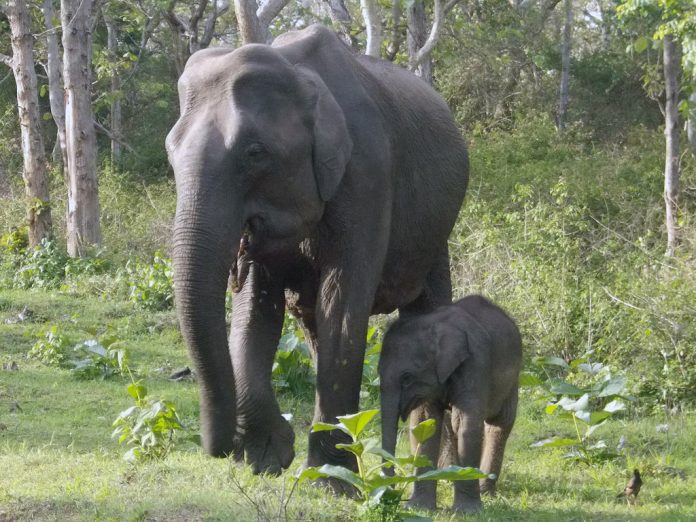Well, I missed National Dairy Month by a week, but here’s a little story about milk that I found in the Scientific American Supplement No. 288, dated July 9, 1881, On the Composition of Elephants’ Milk, it was quoted from a paper read by Charles A. Doremus, M.D., Ph.D. before the American Chemical Society a month earlier.
At the time Doremus was a professor at the University of Buffalo and lectured on practical chemistry and toxicology at Bellevue Hospital Medical College and the American Veterinary College.
A year or two earlier, an Asian cow elephant named “Hebe’” also called “Babe,” owned by the Cooper & Baily Circus, had given birth to a baby which was named “America,” or sometimes “Columbia.”
The newspapers had been full of stories about the birth and to this, Doremus was referring in his opening statement. The text of his paper follows.
“Noticing the recent advertisements in the city regarding the “Baby Elephant,” it occurred to me that perhaps no analysis of the milk of this species of the mammalia had been recorded.
“This I found corroborated, for though the milk of many animals had been subjected to analysis, no opportunity had ever presented itself to obtain elephants’ milk. Through the courtesy of Jas. A. Bailey I was enabled to procure samples of the milk on several occasions.
“On March 10, 1880, the elephant Hebe gave birth to the female calf America. Hebe is now twenty-eight years old, and the father of the calf, Mandrie, 32. Since the birth of the “Baby,” the mother has been in excellent health, except during about ten days, when she suffered from a slight indisposition, which soon left her.
“When born the calf weighed 213 lbs., and in April 1881, weighed 900 lbs. A very fair year’s growth on a milk diet. At the time I procured the samples both mother and calf were in fine health.
“To obtain the milk was a matter of some difficulty. The calf was constantly sucking, nursing two or three times an hour, morning, noon, and night.
“The milk could be drawn from either of the two teats, but only in small quantity. The mother gave the fluid freely enough, apparently, to her infant, but sparingly to inquisitive man, so the ruse had to be resorted to of milking one teat while the calf was at the other.
“When I first examined the specimens they seemed watery, but to my surprise, on allowing the milk to stand, I could not help wondering at the large percentage of cream.
“The following represents approximately the daily diet of the mother: Three pecks of oats, one bucket bran mash, five or six loaves of bread, half a bushel of roots (potatoes, etc.), fifty to seventy-five pounds of hay, and forty gallons of water.
“Elephants eat continually, little at a time, to be sure, but are constantly picking. This habit is also observable in the way the calf nurses. The first specimen of milk was procured on the morning of April 5, the second on the 9th, and the third on the 10th.
“The last exceeded the others in quantity and is, therefore, the fairest of the three. It took several milkings to get even these, for the calf would begin to nurse, then stop, and when she stopped the flow of milk did also.
“I was assured by Mr. Cross and the keeper, Mr. Copeland that the milk I obtained had all the appearances of that drawn at various times since the birth of the calf. Mr. Cross, when in Boston, compared the milk with that from an Alderney cow and found the volume of cream greater.
“I endeavored to have the calf kept away from the mother for some hours, but could not, since she is allowed her freedom, as she worries under restraint, and besides, has never been taken from the mother. The calf picked at oats and hay but was dependent on the mother for nourishment.
“It would have been a matter of great satisfaction to me had I been able to obtain a larger quantity of the milk, or to have gained even an approximate knowledge of the daily yield, but was obliged to content myself with what I could get. By comparing several samples, however, a just conclusion regarding the quality was found.
“The cow must yield a considerable quantity of milk, since the growth of the calf has been constant, and at the time these samples were milked the mother gave as freely to her babe as she ever had since its birth. The calf having gained seven to eight hundred pounds on a milk diet in one year, it is presumable that it had no lack of nourishment.”
The Alderney cow referred to above was one of the breeds raised on a British Channel Island, as were the Jersey and Guernsey breeds. When the German Army occupied the island of Alderney during World War II, most of the approximately 1,500 inhabitants and the bulk of the Alderney cattle were evacuated to the nearby island of Guernsey.
Here the Alderney cattle became bred with the local Guernseys and lost their purebred identity while the Germans killed the ones left behind for beef. The Alderney as a separate breed then became extinct.
The Alderney was said to be “the best butter cow in the world.”
If someone were to undertake to establish an elephant dairy could you imagine the size of the milking parlor that would be large enough for a herd of the beasts?













